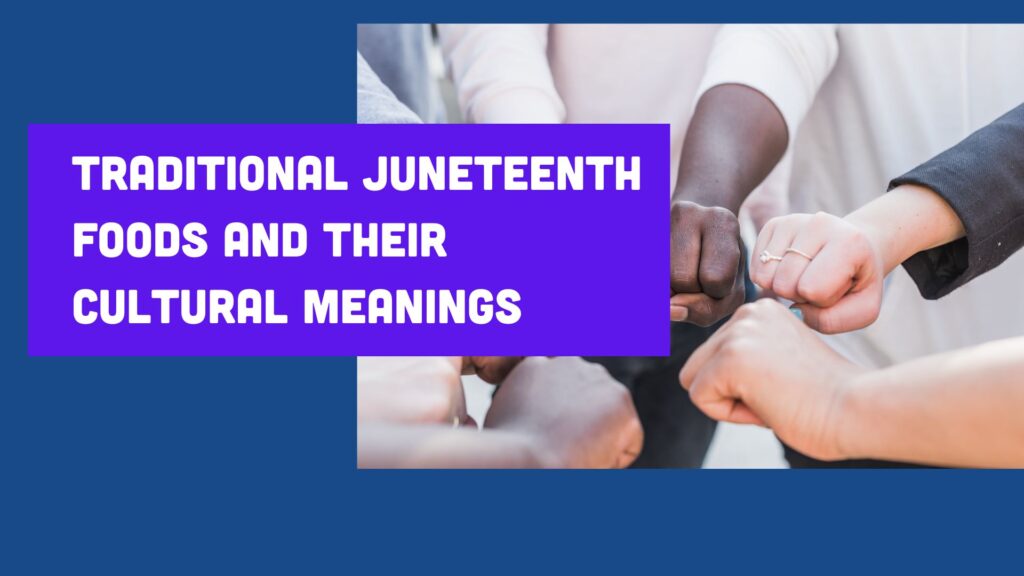Guides, Holidays, Juneteenth
Traditional Juneteenth Foods and Their Cultural Meanings
Every June 19, communities across the United States gather to celebrate Juneteenth—the commemoration of the final enforcement of the Emancipation Proclamation in 1865. Central to these festivities are the foods served, each dish layered with history, symbolism, and cultural pride. From the iconic red velvet cake to savory soul food staples, Juneteenth menus tell a story of resilience, heritage, and community.
In this article, we’ll explore the most popular Juneteenth dishes, their origins, and why they remain meaningful today.
1. The Color Red: Symbolism of Freedom and Resilience
Why Red?
Red is the signature hue of Juneteenth—woven into decorations, attire, and food. The choice of red dates back to West African traditions where red symbolizes blood, resilience, and life force. For descendants of enslaved Africans, it came to represent the bloodshed endured under slavery and the strength of those who survived.
Red Foods on the Table
- Strawberry Soda: Once homemade with fresh berries and sugar, today’s red drinks may include commercial strawberry soda or fruit punch.
- Red Velvet Cake: Its vibrant crumb echoes the resilience theme; traditionally made with buttermilk and a hint of cocoa, its red color is achieved with food coloring or beet juice.
- Watermelon: A summer staple with deep roots in African American foodways, watermelon’s juicy sweetness and bright red flesh embody renewal.
- Red Gumbo: Some families serve tomato‐based gumbo or stews spiced with paprika and cayenne, highlighting Southern flavors.
2. Soul Food Classics: Nourishment and Heritage
The Roots of Soul Food
“Soul food” refers to culinary traditions developed by African Americans in the Deep South. These dishes emerged from limited rations—cornmeal, greens, pork fat—but evolved into beloved recipes passed through generations.
Key Soul Food Dishes
- Fried Chicken
Crispy, golden, and spiced, fried chicken is perhaps the most universally recognized soul food dish. Its origins trace to Scottish frying techniques and West African seasonings, blending two heritages into a satisfying celebration meal. - Collard Greens
Slow‐simmered in ham hocks or smoked turkey, collards carry the notion of “greens for dollars”, symbolizing prosperity. Their bitter edge transformed into a tender, flavorful side dish reflects the journey from hardship to healing. - Black‐Eyed Peas
Eaten for luck and longevity, black‐eyed peas were historically part of plantation provisions. On Juneteenth, they’re often served as Hoppin’ John (peas and rice), signifying hope for the year ahead. - Cornbread
Cornbread—whether baked, fried, or steamed—honors Native American influences on Southern cooking. Its simple ingredients symbolize sustenance and sharing. - Macaroni and Cheese
A comfort favorite, rich with cheese and milk, mac ’n’ cheese became widespread when institutional cookbooks in Black communities promoted this affordable, filling dish.
3. Regional Specialties: Local Flavors on a National Holiday
While certain dishes appear almost everywhere, Juneteenth plates vary by region:
- Texas Barbecue (Brisket or Ribs)
In Texas—where Juneteenth began—smoked meats seasoned with dry rub celebrate local barbecue traditions. - Lowcountry Boil (Georgia, South Carolina)
Shrimp, sausage, corn, and potatoes boiled with Old Bay or local spices showcase coastal seafood heritage. - Chicken and Waffles (Nationwide)
Merging sweet and savory, this pairing highlights Black culinary innovation in urban centers like Harlem. - Red Rice (Louisiana)
Tomato‐infused rice reflects Creole influences blended into Juneteenth menus across the Gulf Coast.
4. Sweet Endings: Desserts That Tell a Story
Peach Cobbler
Georgia’s peaches and a buttery crust combine in a cobbler that speaks to Southern abundance.
Sweet Potato Pie
A cousin to pumpkin pie, sweet potato pie uses a native tuber long farmed by enslaved Africans. Its orange filling nods to autumn harvest and home comfort.
Banana Pudding
Layers of vanilla wafers, pudding, and bananas evoke simple, layered joys—memory food for many Black families.
5. Drinks of Celebration
- Lemonade: Freshly squeezed for brightness and refreshment.
- Sweet Tea: A staple Southern beverage, its sweetness parallels the holiday’s tone of joy.
- Hibiscus Tea (Zobo or Sorrel): African and Caribbean roots bring an earthy tartness, often spiced with ginger.
6. Why These Foods Matter
A. Community and Family Bonding
Juneteenth feasts are often potlucks—everyone brings a dish to share. This communal approach mirrors the collective journey from enslavement to self‐determination.
B. Cultural Continuity
Cooking and sharing traditional recipes pass heritage to younger generations, reinforcing cultural pride and historical memory.
C. Symbolic Remembrance
Each ingredient—from peas for luck to red velvet for resilience—serves as a living symbol of the struggle for freedom and ongoing work for equality.
7. Bringing Juneteenth Foods to Your Table
- Plan a potluck: Invite neighbors to bring their family recipes and share stories.
- Highlight red foods: Center your menu around the color of resistance and renewal.
- Educate while you bake: Have children help with recipes as you discuss each dish’s history.
- Support Black‐owned food businesses: Purchase barbecue, cakes, or catering from local Black chefs.
8. Beyond the Plate: Expanding the Celebration
While food is central, Juneteenth celebrations often include:
- Music and dance: Live performances of gospel, jazz, hip‐hop, and African drumming.
- Educational events: Workshops, lectures, and exhibits on Black history.
- Parades and festivals: Colorful processions and community gatherings.
Together, these elements make Juneteenth not only a day of remembrance but also a vibrant affirmation of Black life and culture.
9. Final Reflection
Traditional Juneteenth foods are more than recipes—they are edible history, weaving stories of survival, creativity, and hope into every bite. As we honor freedom won on June 19, 1865, let us continue to share these dishes in celebration, education, and unity, ensuring that the cultural meanings they carry remain alive for generations to come.
